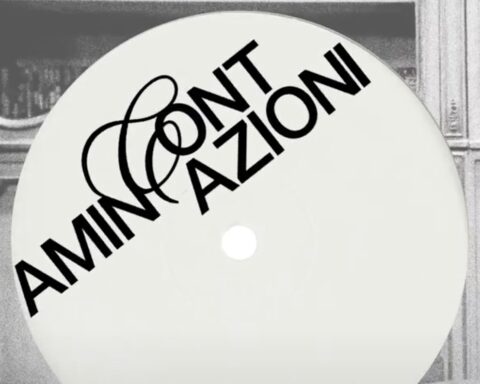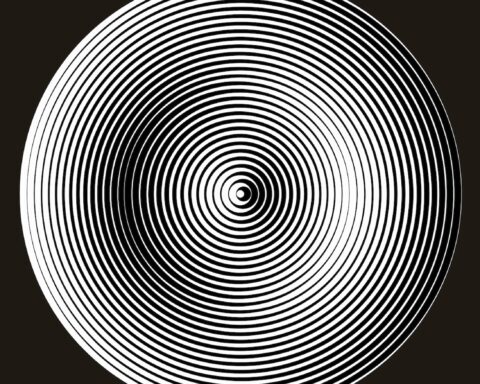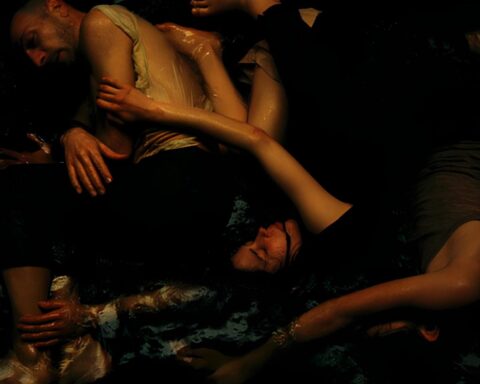While studying at Falmouth, he extended his practice past that of conventional straight photography and produced several bodies of work that were either cameraless or incorporated 3D/virtual elements. Like many people born in the 80s and 90s, Black was raised with access to the internet and video games which would come to have a profound effect on his later work. Once social media became mainstream, most people had constructed multiple profiles for themselves and began colonizing the new and networked digital territory. The ability to plug into different roles inspired his earlier work like Avatars and Avatars II, before he eventually began investigating the medium itself. Black now lives in Tokyo. His work is still digital, and continues to touch on avatar themes and digital networks, but has recently taken a more Japanese turn. Being immersed in another culture, and another culture’s visual language, offered an opportunity to reflect on how he had understood it from abroad, and how it affects the people living in it. Finding that his past experiences with Japanese media, like anime and video games, had already shaped his idea of Japan, he produced 1 PLAYER START for Tokyo Art Book Fair. Available for viewing online, it is a collection of images taken around Japan, often jarringly fused with snapshots of arcade game machines’ screens.

Lisa Andreani: How do you imagine today as a surface?
Michael Black: It has to be a screen, doesn’t it? It’s an incredibly cliche “sign of the times” answer, but let’s be honest, we’re obsessed with them. Screens are taking over more and more of our vision; figuratively because we’re spending more time looking at screens, but also literally thanks to the growing popularity of VR (virtual reality) and AR (augmented reality), 4D cinema experiences and TVs as wide as your couch. They’re in your pocket, on your wrist, in your bag, on the wall, on the desk, in the dashboard. There’s no getting away from them.
Today is not just a screen because we’re surrounded by them, but because our life comes to us through screens. I’m sure some people still read the news in print, and maybe still make landline calls. But the majority of us today live through our screens: it’s how we see our friends, how we get the news, and how we keep ourselves entertained; how we shop, date, gamble and read. Cooking is perhaps the only thing you can’t do digitally – but there’s nothing stopping you from ordering online, then strapping on a headset for a VR dinner date.
L.A. In a metaphorical way do you see yourself as more of a surfer or someone who descends down into the depths?
M.B. It’s funny because surfing and depth are both examples of language used when discussing digital themes, especially when talking about the internet. “Deep web” and “surfing” the net, for example, have both become part of the modern digital vernacular (although surfing now sounds somewhat dated, post-2000). I definitely consider myself more of a diver. I find it difficult to get excited about work unless I’m immersed in whatever it is I’m questioning. This feeling is particularly potent when working within digital means, which I do almost exclusively.
Some online experiences require exploration to be discovered, and immersion to take part in. Many people think of the internet as confined to a browser and made up of only pages. In reality it plays host to communities, subcultures, marketplaces, and worlds wherein billions of people and their avatars interact. These environments lie below the web’s surface of facebook profiles and Wiki pages, so you’re kind of forced to explore in order to discover them. This has led me into projects executed entirely online, within simulations, within programs, and provided inspiration and ideas for projects executed in real life, too. Digital spaces certainly have depth.
The process of making work is also explorative: going deeper and deeper until it hits a natural stopping point, or everything becomes so alien you have to turn back towards the surface. Work should always be the investigation of the subject; an attempt at understanding it, then interpreting it for yourself and the viewer. It’s a visualization of research impossible to achieve if you just sit on the surface.

L.A. How did your education and experiences influence your work?
M.B. I was a huge nerd throughout my school life. Even when I was trying really hard to be angsty, I still watched Star Trek, played World of Warcraft, and loved anime. At the time I was just having fun, but actually it exposed me to a lot of things that would later become themes in my work. Games like World of Warcraft introduced me to online groups of role players: people who control characters in virtual environments and act out scenarios. It maximizes immersion and enables players to live a life as someone other than themselves. In university, I went on to produce a project made entirely inside of the simulation Second Life by interviewing people’s avatars in a virtual photography studio. The role playing I saw there was on a whole other level; people were creating online communities of like-minded players whose avatars took on whatever form they wanted. They sought out experiences they couldn’t have in the real world, living as quadriplegics, rubber bipedal horses or, if they wanted to, dust clouds. I think a lot of people would discount those communities too simply as weird, but because I’d role-played in the past online, it was easier to understand and engage with. It’s not weird at all really, I get it.
I was studying photography at Falmouth University at the time, which was absolutely incredible. It allowed me to be very loose with my practice. That trip down the Second Life rabbit hole opened me up to making photography digitally, and from there I continued to work more with computers, and in online and digital spaces. Since then, the biggest motivation has been to understand what networks and virtual environments are able to do for people, and to scrutinize how we perceive them. Despite its ubiquity, very few people take time to engage with the internet past video games and social media, even though a lot of our worries haven’t changed since its inception. I still look back to old favorites from my teen years for inspiration, though. Ghost in the Shell, The Matrix, Serial Experiments Lain, Welcome to the NHK. They were some of the first to ask big and existential questions on the topic (and I’m still a sucker for sci-fi).

L.A.: Can you tell us something more about the series The Shortest Distance Between Two Points? What are the interactions that could invest the viewer?
M.B.: The Shortest Distance Between Two Points is about how we interact with people across networks and how we interact with the devices we use to achieve that. It is very literally about distance and the absence of distance involved when using digital technology.
The title of the piece comes from wormhole theory, which is not me trying to sound like I know anything about theoretical physics, but because I stumbled across the expression in a horror sci-fi. In theory, wormholes are created when space bends in such a way that two points are touching. When this happens, the two points exist in the same location with zero distance between each other, creating a wormhole through which one could (theoretically) travel. Digital networks and screens work in a similar way as wormholes: networks collapse the space between users, while screens effectively act as portals through which we can view another location – a window like a wormhole to another place. And it’s not just about seeing other places through screens, but about connecting without barriers. The space between people is shrinking too, as we spend more time online and within growing social networks. As the distance between individuals shrinks, so does individuality. We are already hearing tag words like “echo chamber” on social media, attempting to address people’s closed-mindedness as they spend more time operating within networks of like-minded people.
Lastly, it’s about the distance between ourselves and the digital environment. Since its inception, we have sought to colonize digital space. There’s still a lot of mystery surrounding the things on screens – we can’t lift up the hood, poke around, take apart and rebuild programs like we can with physical mechanical things like cars. It makes people either ignorant of how they work, or scared because they don’t understand. It allows everything digital to hide behind ridiculous misnomers like “clouds” and “cookies” and “windows”. This is something that has effectively made the digital seem closer to us and our reality, when actually, virtual stuff: dimensionless, immaterial, and ageless within its environment, could not be more alien. And now, even the edges of screens are dissolving, and the difference between reality and virtuality is shrinking: VR seeks to cover our vision entirely, as AR filters and alters more of what we see. This project is a response to the loss of that distance, and a reaction to the realization that behind the “pages” and “wallpapers”, the digital is incredibly unfamiliar and distant.
Given that everyone is online now, I think that these are themes everyone is able to recognize, if they open themselves up to thinking about it. To be clear, I am not at all against digital technology or networks, although I probably sound deathly paranoid. But I think that it’s strange that barely anyone questions how it became so prolific or stops to think about where it might be headed.

L.A.: What about life in Tokyo? Does the city have something in which you’re interested?
M.B. Growing up in the 90s, I think I was surrounded by Japan without really realizing: Power Rangers, Pokemon, Nintendo, Tamagotchi, the list of non-japanese things I remember is probably much shorter. Naturally, that means Tokyo is loaded with nostalgia triggers. It’s strange; Japan has its own kind of oriental americana I think. Chunky G-Shock watches, boxy cars, and big-eyed cutesy characters resonate with a lot of people in a way similar to pickup trucks, dusty highways, and Bud Light. But at the same time, Tokyo still manages to be completely alien and I’m still at odds with a lot of the cultural differences.
It’s not really the case that Tokyo has something which I am interested in, it’s more like Tokyo (and the rest of Japan) is the thing that interests me. The whole experience of living here is an adventure. I find that my work is reacting to Japan, but I am also reacting to myself being in Japan. 1 PLAYER START, for example, is a book I put together for Tokyo Art Book Fair. It started as cityscapes fused with chunky, lo-res images of anime heroines and scoreboards from a local arcade. But soon it began taking me on nostalgic trips back to the Japan I thought I knew before arriving here. It’s like my brain was saying “Japan isn’t Japan enough” and I had to make it a cliche; I couldn’t find the cyberpunk in the everyday, so I had to jarringly force it into being through my photos.
Living here is helping me to understand how images shape people’s ideas of experiences before they procure them, and experiencing how Japan’s own visual culture is impacting the life of its people. I’m not exclusively working on “Japanese” themes, but I’m definitely not done with Tokyo yet.
L.A. Are you engaged in new projects?
M.B. I am. Recently I’ve become fascinated by the migration of physical things into digital spaces. Not only have we created digital spaces in likeness to our real, but now traditionally physical things are being moved over, pushed into digital formats. This isn’t necessarily new – Instagram, Hipstamatic, and HUJI have recently helped bring film photography to digital devices, whereas email began replacing traditional mail literally decades ago. Even light switches can be online now. So many spaces: personal, professional, industrial, are being affected, and so are we. The next step is to explore that, probably by returning to some of the techniques I was using in more recent work like Lovers: digital rendering and photogrammetry. That doesn’t mean I don’t want to venture down new avenues. I’m currently engaged in something purely virtual, and the problem, as usual, is trying to figure out how to bring it into the real, or if I even need to.








